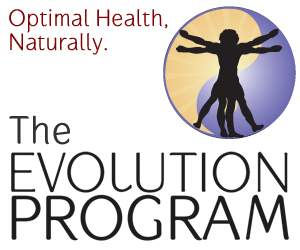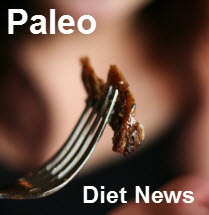Paleo Diet Path toward Being Human: Nuts Instead of Fruit
Reconstructed skull of Australopithecus afarensis. Displayed at Museum of Man, San Diego, CA. Photo by Durova. Image courtesy of Wikipedia.org
At what point did we begin to veer away from the simian path and get on the road to becoming human? Scientists are always looking for that moment, the moment when we stood upright and freed our hands for uses other than locomotion. And what caused us to stand upright in the first place? Anthropologists and paleontologists keep looking and slowly, bits and pieces fall into place. One such piece is the discovery that our distant ancestors preferred nuts to fruit, putting them on the Paleo diet path towards being human.
An article on Discovery.com, which discusses the findings of
Gabriele Macho, a professor of paleoanthropology at the University of Bradford and colleague Daisuke Shimizu, shows that our ancestors did not eat much fruit, but rather, ate a lot of root vegetables, nuts, insects and some meat. These findings may explain how we actually became human.
Early hominids left the trees to forage at ground level. The change in behavior may have been the cause of two major defining human characteristics: teeth unlike any other animal and bipedalism, walking upright on two legs.
”It is no coincidence that the emergence of terrestrial bipedalism went hand in hand with changes in oro-facial morphology, tooth enamel thickness and tooth microstructure,” said co-author Gabriele Macho, a professor of paleoanthropology at the University of Bradford.
Macho and colleague Daisuke Shimizu analyzed the teeth of Australopithecus anamensis, a hominid that lived in Africa 4.2 to 3.9 million years ago. The famous skeleton “Lucy” came from the same genus. And anthropologists now suspect that the recently found and even older Ardipithecus evolved into Australopithecus, which likely led to the modern human genus, Homo.
Based on actual tooth finds, Shimizu produced sophisticated computer models showing multiple external and internal details of the teeth. One determination was immediately clear: Unlike chimpanzees, which are fruit specialists, the hominid couldn’t have been much of a fruit-lover.
“Soft fleshy fruits tend to be acidic and do not require high bite forces to be broken down,” explained Macho. “The enamel microstructure of A. anamensis indicates that their teeth were not well equipped to cope with acid erosion, but were well adapted to masticate an abrasive and hard diet.”
Because of these findings, it seems most likely that these hominids ate nuts, roots, bugs and some meat, which sounds very much like the Paleo diet path towards being human. While some leaf eating may have occurred, that would have been a very minor part of their diet since they were ill-equipped to handle leaves. The researchers compared the teeth of the vegetarian gorilla and chimpanzee with the teeth of Australopithecus anamensis, the Lucy group, and they found major differences in how the teeth were shaped, used and worn.
“Gorilla molars are relatively high crowned and have shearing crests, which are advantageous for the breakdown of leaves,” Macho said.
In contrast, the shape of the hominid teeth and their internal enamel structure, suggests the early humans combined shearing with lateral lower jaw movement.
University of California at Berkeley paleontologist Tim White co-directed the recent project that brought to light the “Ardi” skeleton and Ardipithecus ramidus, which lived 4.4 million years ago.
White agrees that Australopithecus molars had thick enamel “more durable to heavy chewing of hard and tough foods with adhering grit,” he told Discovery News. Ardi likely consumed a similar diet and “was probably omnivorous,” according to White and his team, who add that mushrooms were also probably on the prehistoric menu.
Global and environmental changes altered the planet causing more varied seasons. This meant the availability of food fluctuated and there was great predation risk. This increased the competition for resources. Each species took a different path to survive. Gorillas became vegetarians, chimps ate more fruit and our distant ancestors were put on the Paleo diet path toward being human; they became omnivores.
Macho explained, “This subtle interplay between diet, social structure and life history ultimately led to the evolution of our large brains.”
The evolution of our remote ancestors into homo sapiens is a fascinating topic. Did you find this article interesting? If you have any questions, comments or observations please leave them below. Thank you!






Another great article thanks!
Absolutely fascinating!